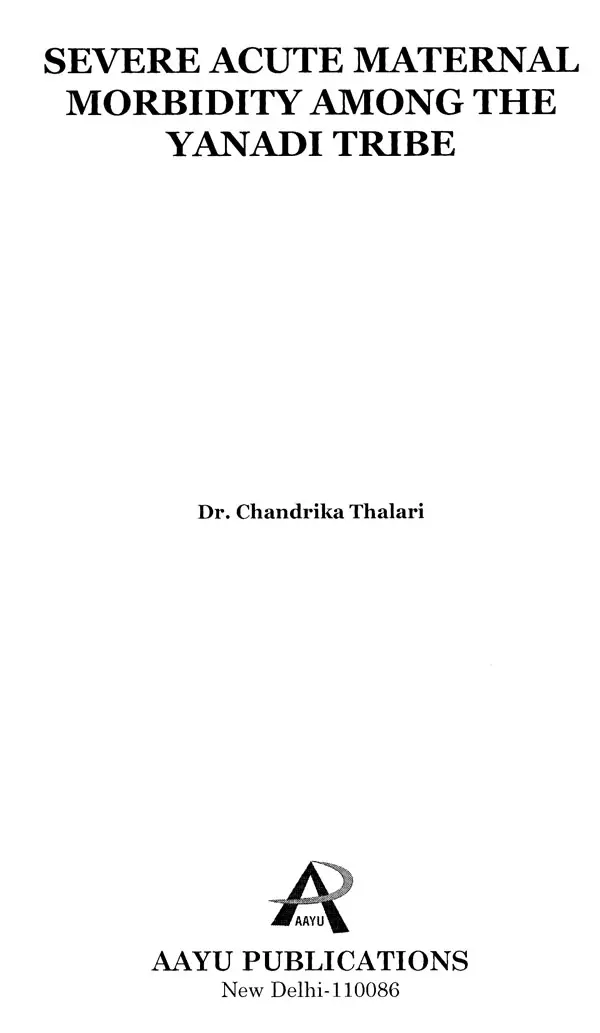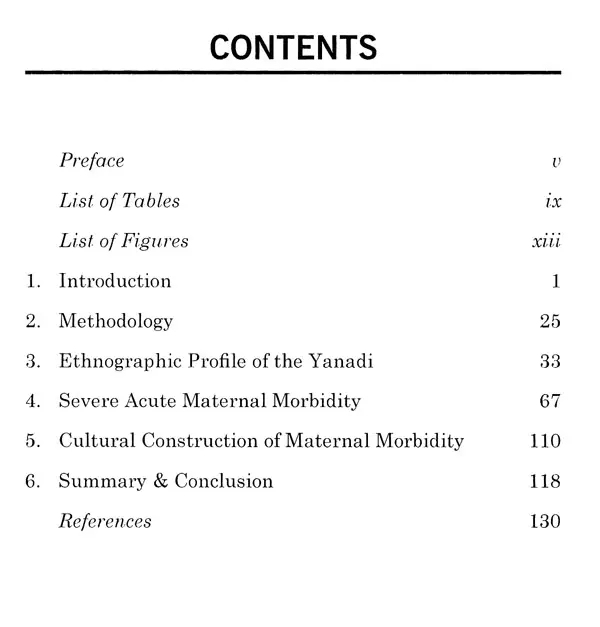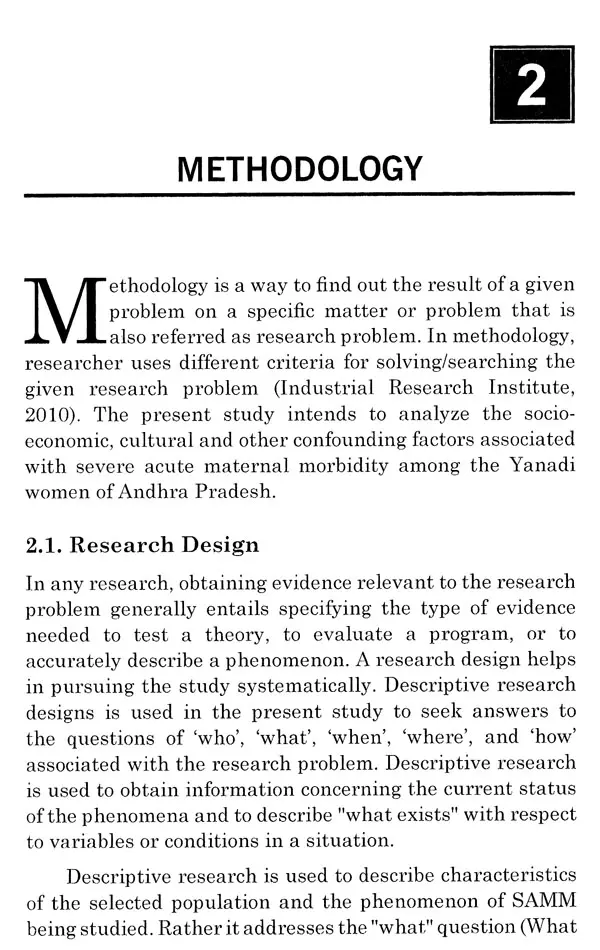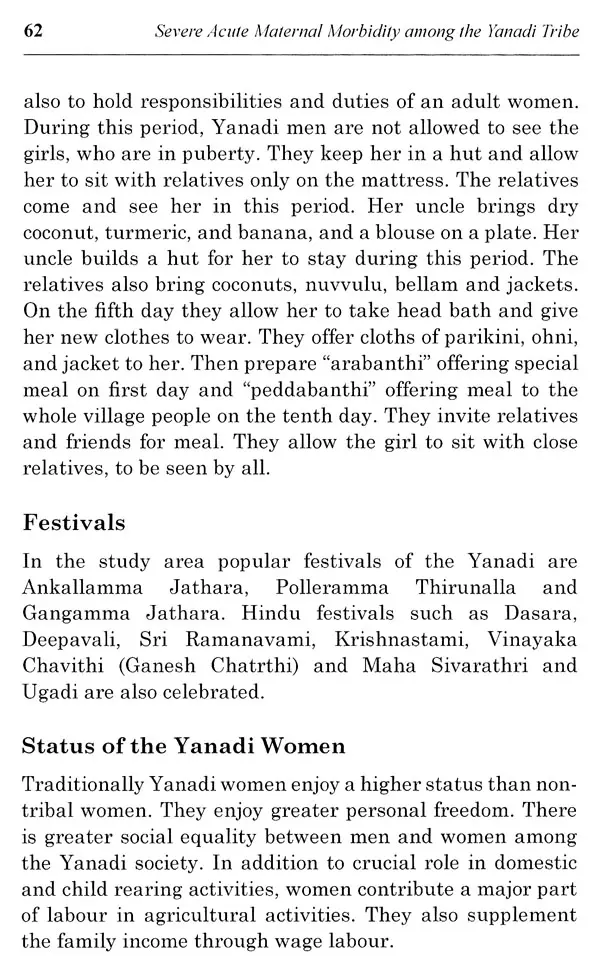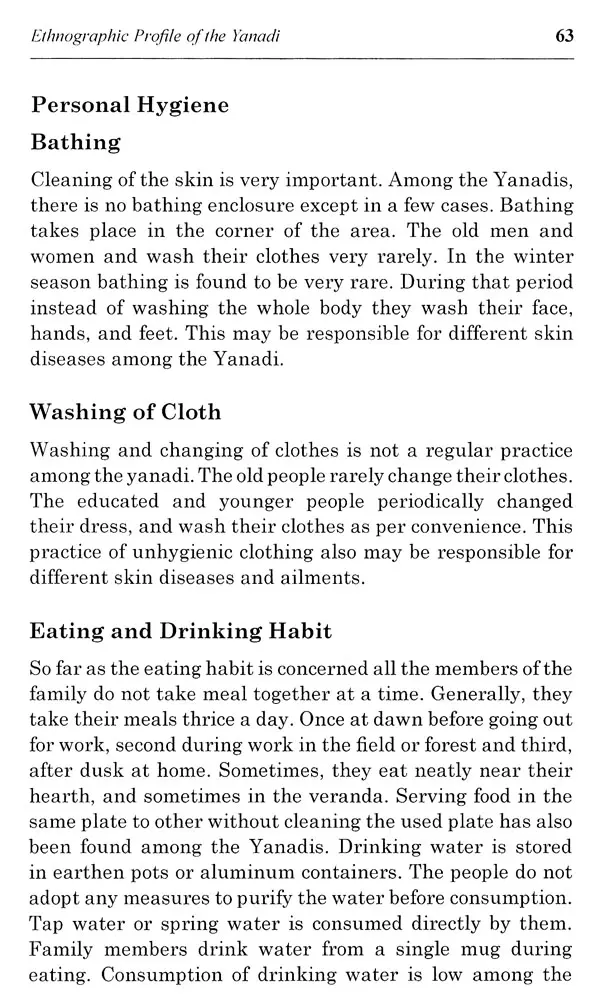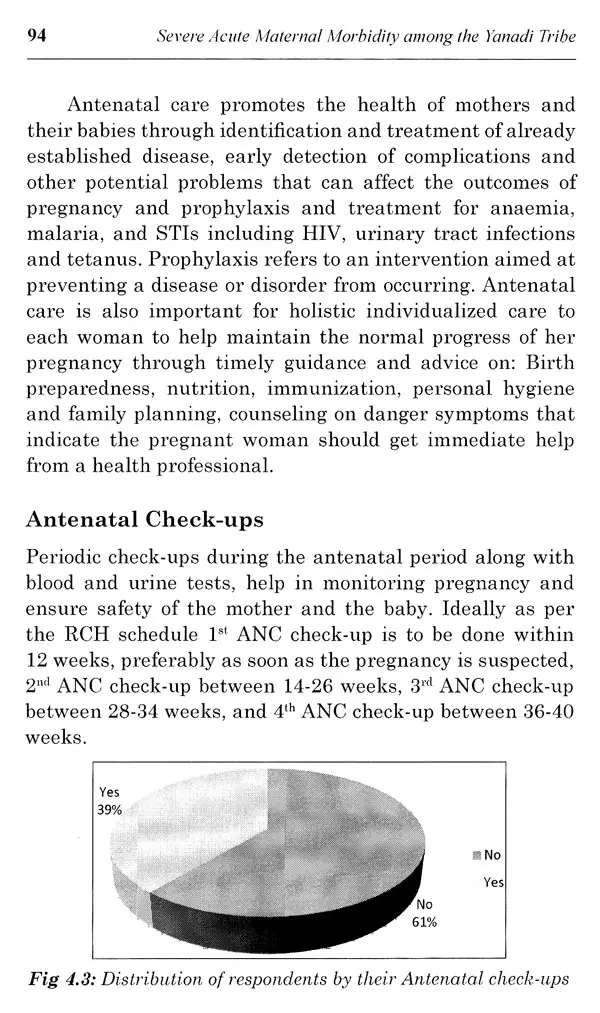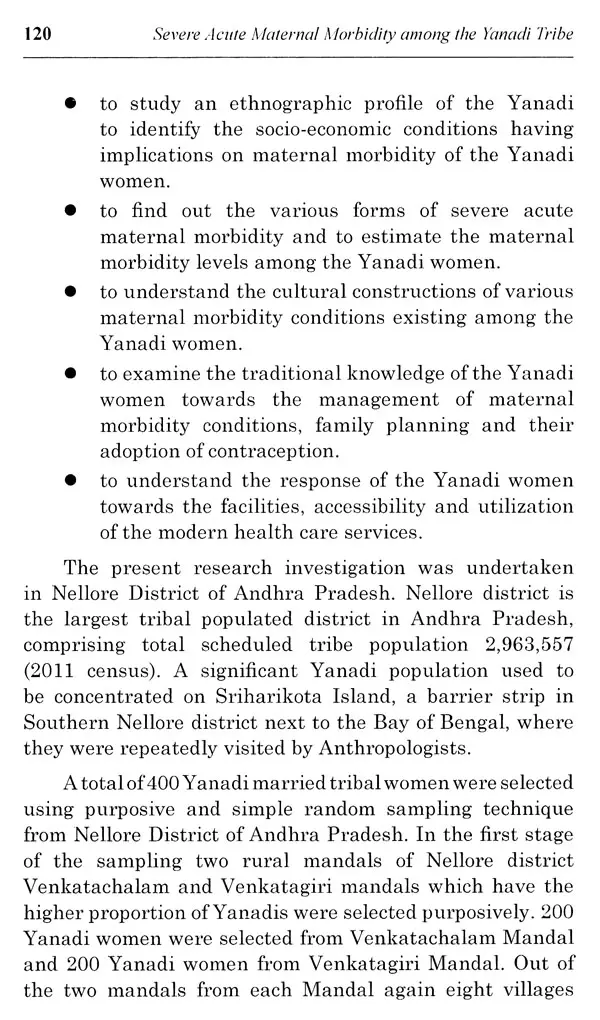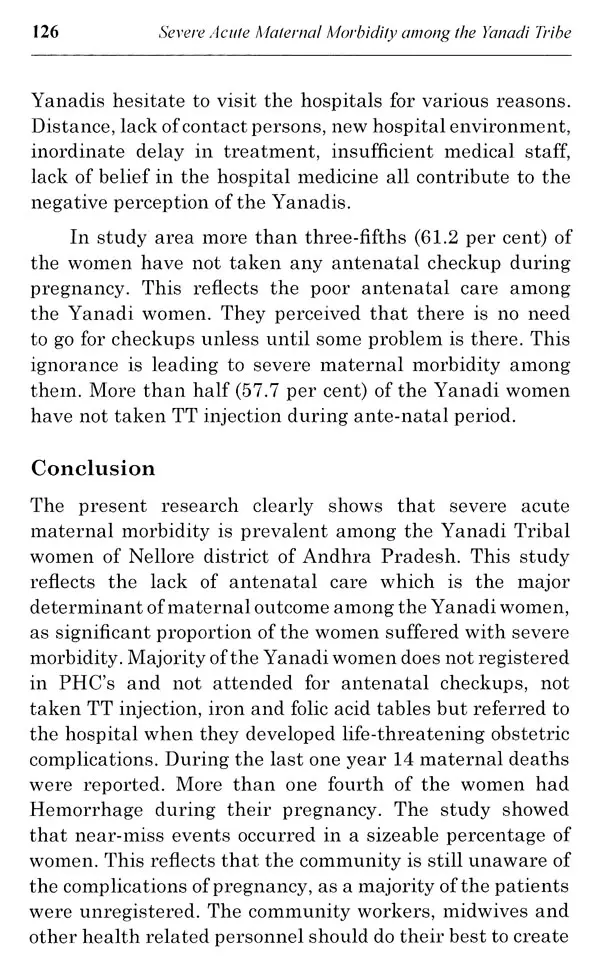
Severe Acute Maternal Morbidity Among the Yanadi Tribe
Book Specification
| Item Code: | UAP289 |
| Author: | Chandrika Thalari |
| Publisher: | Aayu Publications, New Delhi |
| Language: | English |
| Edition: | 2021 |
| ISBN: | 9789389381207 |
| Pages: | 156 |
| Cover: | HARDCOVER |
| Other Details | 9.00 X 6.00 inch |
| Weight | 350 gm |
Book Description
Tribal cultural attributes are attached to the concept of health and diseases. In case of serious illness people tend to attend modern health care facilities, but in many cases accessibility of such facilities does not confirm people's acceptance of modern health care system, otherwise they believe in spirit and other supernatural beings as causes of disease and priority of treatment is inclined mostly towards traditional healers. There has been some concern on the general health and maternal morbidity status of women in India but very little attention has been given to reproductive morbidity of women. Women in India suffer from at least one maternal morbidity health problem largely due to lack of social awareness and decision making power. Therefore most of the time diseases are not diagnosed at the right time which may cause women's health to deteriorate.
Dr. Chandrika Thalari, working as a Post-Doctoral Fellow (UGC-Women), Dept. of Anthropology. Sri Venkateswara University. Tirupati, India. She has completed M.Sc. Anthropology, Ph.D. Degree on "A Study on Severe Acute Maternal Morbidity among the Yanadi Tribe in Nellore District of A.P. She has been selected for RGNF - Rajiv Gandhi National Fellowship and qualified for the UGC-NET in Anthropology and APSET- Andhra Pradesh State Eligibility Test in Anthropology. I have published papers in referred journals and in Edited Volumes. Besides she also presented papers in National Seminars/Conferences/Workshops and also participated in Training Programmes and Methodology Courses. I was worked as Academic consultant in the Dept. of Anthropology, Sri Venkateswara University, Tirupati for the year of 2015-16.
he concept of health and well being of tribal people differs from the rest of the population due to their unique life ways. Tribal cultural attributes are attached to the concept of health and diseases. In case of serious illness people tend to attend modern health care facilities, but in many cases accessibility of such facilities does not confirm people's acceptance of modern health care system, otherwise they believe in spirit and other supernatural beings as causes of disease and priority of treatment is inclined mostly towards traditional healers. There has been some concern on the general health and maternal morbidity status of women in India but very little attention has been given to reproductive morbidity of women. Women in India suffer from at least one maternal morbidity health problem largely due to lack of social awareness and decision making power. Therefore most of the time diseases are not diagnosed at the right time which may cause women's health to deteriorate.
In view of this, I made an attempt to examine the social-cultural, economic and obstetric determinants of severe acute maternal morbidity among the Yanadi women. I feel encouraged by my teacher Prof. V, Gangadhar, who motivated me to undertake this work, and I am happy to bring about this in a comprehensive way. The hard days in my research journey turned to joy after seeing this book.
evere Acute Maternal Mortality (SAMM), also known as "near miss" is defined as "A very ill pregnant or recently delivered woman who would have died had it not been that luck and good care was on her side" (Mantel et al., 1998: Pattinson et al., 2003). Otherwise women with severe organ dysfunction or failure in pregnancy or during labor or puerperium that could reward death, but survives, can be termed as SAMM. It occurs five times more frequently than maternal deaths. Therefore, make out women with SAAM allows for gathering information on disease profile for causative factors and major complications in a population.
The definitions of SAMM are based on two approaches (1) An organ system approach (Mantel et al, 1998; Pattinson et al. 2003; Waterstone et al., 2001) eg. shock from hemorrhage, severe pre-eclampsia or specific organ failure; these are best identified as they occur; (2) Management, or process, based (Bewley S. Creighton S. 1997; Kilpatrick SJ. Matthay MA. 2002) e.g. admission to a High Dependency Unit (HDU) or Intensive Care Unit (ICU) or transfer to another health care facility (usually higher level); these are usually retrospective studies. By definition, the woman survives and the case can be assessed, allowing clear identification of problems in the health system. Thus in the recent past SAMM is increasingly being used as a new quality indicator of obstetric care (Lazzerini et al., 2018).
Book's Contents and Sample Pages
